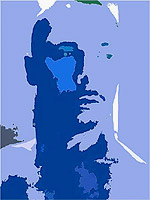The Gong Show: Dick Schory's"Music To Break Any Mood"

MUSIC TO BREAK ANY MOOD
DICK SCHORY'S NEW PERCUSSION ENSEMBLE
RCA VICTOR LSP-2125
It's companion disc, TAS listed "Music for Bang, Barroom and Harp" (RCA Victor LSP-1988) is among the best percussion records I've heard, and I've heard 'em all! Starting with the Audiophile label's groundbreaking "Echoes of the Storm", percussion records have been my "guilty pleasure". However, I feel no shame in recommending either Dick Schory disc. They are both superb. "Music to Break any Mood" was released shortly after "Music for Bang, Barroom and Harp", and retains much of the magic of that gem. What is different here is that this production was recorded in Chicago's Orchestra Hall by Lewis Layton, of the famous Mohr/Layton team, which was responsible for many of the great classical Living Stereo recordings. Layton, being familiar with the challenges of recording in Orchestra Hall was the obvious choice to engineer this project, just as Bob Simpson was in regards to Webster Hall in New York. My pressing of LSP-2125 is a beauty, a fabulous near-mint first pressing from Indianapolis with A1-1S / A1-1S stampers. It doesn't get any better than this, folks. I bought it over 20 years ago at a convention in New York. It was $75.00, which at that time was the most I had ever paid for a record.* But I had recently discovered the delights of LSC-1866, and I couldn't resist it. It turned out to be a wise decision, as I haven't seen another copy since. I did come across a mono copy with a different jacket design and eventually sold it. I can't imagine why RCA released these in mono, as both records are all about stereo. In fact, the hall and the captured acoustic take almost as much of the spotlight as the music, particularly in the earlier recording.
The jacket design on the stereo issue (shown above) is a hoot! I mean Dick Schory (?) in a leopard Tarzan getup, about to "break the mood" in what looks like an opium den/harem, by striking the world's largest gong, which will produce, as the jacket exclaims, the "world's biggest sound". The monster gong is struck in the first few seconds of "Caravan", which opens the album. The sound is spectacular and were off to a good start. There is a good sense of the sound stage width and depth, and individual instruments were well defined within the space. The gong is struck as a finale, however the decay seemed short for such a massive instrument in the cavernous Orchestra Hall. Checking the liner notes, it turns out the reverberation was deliberately shortened. Also noted is that every selection was a completely new production, with different microphones, orchestra positioning, etc.
This definitely wasn't a "set it and forget it" production. This might account for my disappointment with the record, as I listened from one tune to the next. And all though producer Bob Ballard states that every effort has been made to keep the space three dimensional and that placement of instruments clear, I found that that it wasn't consistent.
Part of the problem also lies with the arrangements, which are sometimes uninspired. Granted that producing a followup to equal or surpass the earlier record is near impossible. If my expectations hadn't been set so high, I might have been more positive in my reactions.
"Music to Break Any Mood" does have a lot going for it, but in my opinion, it doesn't quite reach the level of the justly praised "Music for Bang, Barroom and Harp". The number one reason is that despite Orchestra Hall's fabulous acoustics, we never really get a consistent sense of it's dimensions of volume. Other criticism? The program simply isn't as interesting or involving as the earlier record. I do recommend it if you feel you need another Dick Schory record (it probably is the best of the several later releases, or if the price is low, but I wouldn't pay a premium for it (again)!
*since surpassed - several times over

